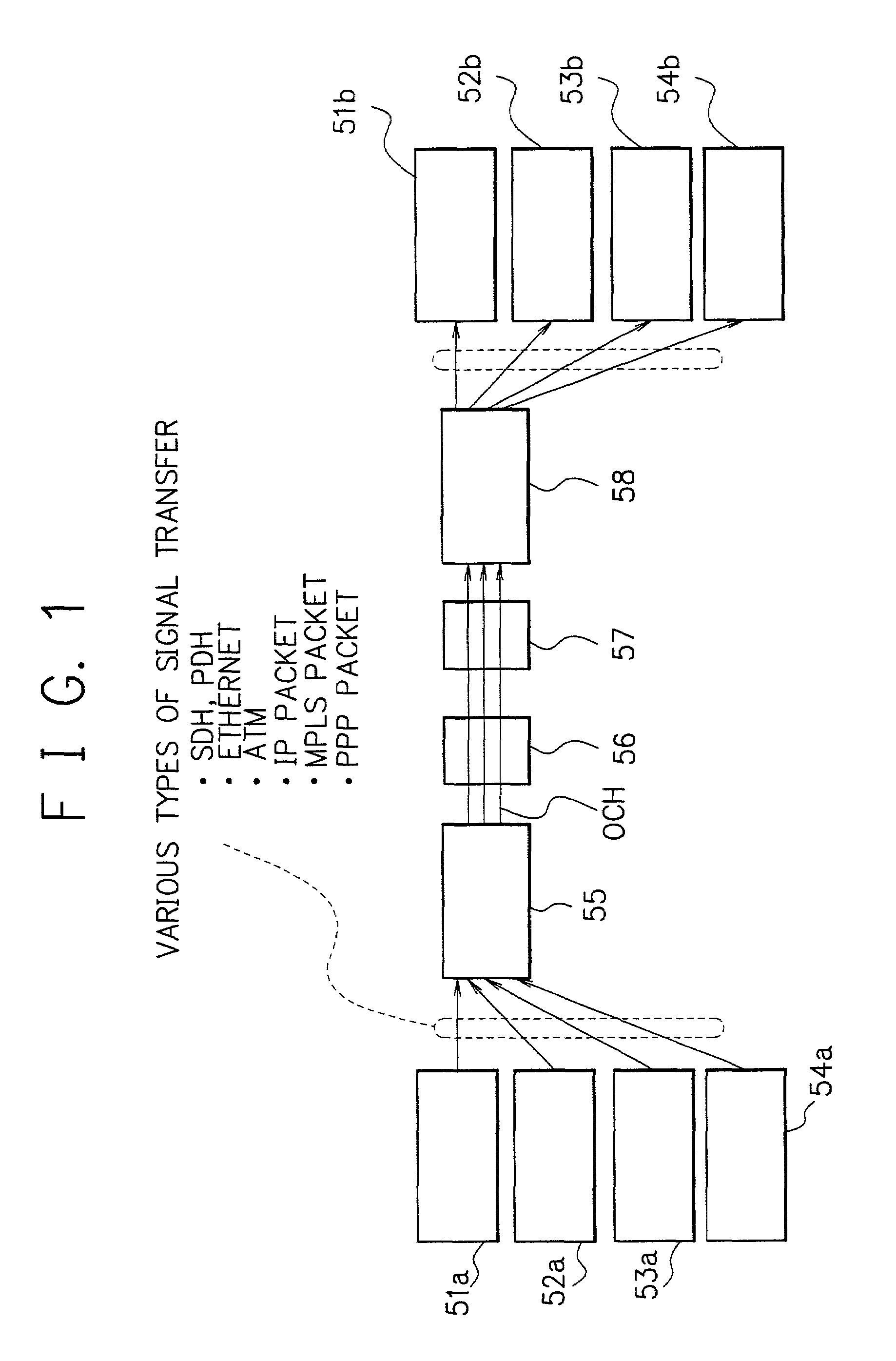Device, method and system for transferring frame
a frame and device technology, applied in the field of devices, methods and systems for transferring frames, can solve the problems of remarkably deteriorating throughput capacity, inability to estimate traffic characteristics and timing of generation/extinction of flow, and inability to directly equalize traffic using conventional techniques applied to user traffi
- Summary
- Abstract
- Description
- Claims
- Application Information
AI Technical Summary
Benefits of technology
Problems solved by technology
Method used
Image
Examples
Embodiment Construction
[0053]In the following, configurations of networks to which the present invention is applied, and an outline of the present invention will be described. FIG. 1 shows an example of a network model to which the present invention is applied. In FIG. 1, plural OCHs, which correspond to wavelengths of WDM, connect a network device (Ingress) 55 and another network device (Egress) 58. The Ingress 55 receives various user data from user devices such as an ATM cross connecter 51A, an IP router 52A, a switcher 53A, and a multiplexer 54A. As examples for the user data, there are ATM cells from the ATM cross connecter 51A, IP packets and MPLS (Multi-protocol Label Switching) packets from the IP router 52A, and STM (Synchronous Transfer Mode) signals such as SDH (Synchronous Digital Hierarchy) and PDH (Pre-synchronous Digital Hierarchy) from the switcher 53A and multiplexer 54A.
[0054]The Ingress 55 retrieves only valid data from the user data, and judges QOS in data transmission. After that, the...
PUM
 Login to View More
Login to View More Abstract
Description
Claims
Application Information
 Login to View More
Login to View More - R&D
- Intellectual Property
- Life Sciences
- Materials
- Tech Scout
- Unparalleled Data Quality
- Higher Quality Content
- 60% Fewer Hallucinations
Browse by: Latest US Patents, China's latest patents, Technical Efficacy Thesaurus, Application Domain, Technology Topic, Popular Technical Reports.
© 2025 PatSnap. All rights reserved.Legal|Privacy policy|Modern Slavery Act Transparency Statement|Sitemap|About US| Contact US: help@patsnap.com



